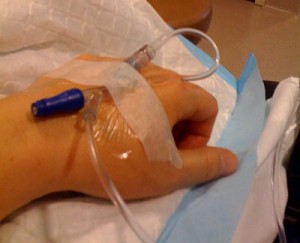A list member just told us about this. Thanks, Sandy!
CancerCare Launches New Program to Help Multiple Myeloma Patients Cover Transportation Costs
 ‘Door to Door’ initiative offers individual grants to patients to help defray costs of transportation to and from medical care
‘Door to Door’ initiative offers individual grants to patients to help defray costs of transportation to and from medical care
NEW YORK, July 20 /PRNewswire/ — CancerCare announced today the launch of the “Door to Door” program for patients with multiple myeloma. CancerCare’s program will provide individual grants of up to $600 annually to multiple myeloma patients for covering transportation costs such as gasoline and taxi, bus or train fare to and from their medical care.
The program is funded in part by a generous grant from Millennium: The Takeda Oncology Company. CancerCare is a national non-profit organization based in New York City that provides free support services to people affected by cancer.
Multiple myeloma is a cancer of the bone marrow that is diagnosed in approximately 20,000 people annually in the U.S. Advances in the treatment of this cancer have dramatically increased patients’ life expectancy (an estimated 60,000 people in the U.S. are now living with multiple myeloma) and consequently lengthened the duration of treatment.
“Because of the nature of their therapies and the disease itself, many multiple myeloma patients may be required to visit their doctors several times a week over many months. Particularly for patients on a fixed income, these travel expenses add up and create a financial burden that may prevent them from keeping up with their health care,” noted Diane Blum, executive director of CancerCare. “The Door to Door program will provide much-needed relief to this patient population, and we are grateful for Millennium’s support.”
Founded in 1944, CancerCare has a long track record of providing financial assistance to people facing cancer; it is a cornerstone of its direct support services to help people cope with the emotional and practical issues of a cancer diagnosis. During fiscal year 2009, CancerCare provided over $4.2 million in grants to more than 24,000 people with cancer to cover treatment-related costs like transportation, child care and medications for side effects.
Last year CancerCare launched a separate foundation to help cancer patients cover the cost of their health insurance co-payments for certain types of treatments. To date, the CancerCare Co-Payment Assistance Foundation has assisted thousands of people undergoing cancer treatments with grants of up to $10,000.
To receive a Door to Door transportation grant, patients must meet certain eligibility criteria and complete an application form. The form can be viewed on the CancerCare website at www.cancercare.org.
For more information about the CancerCare Door to Door program, contact Jeanie M. Barnett, director of communications, at 212-712-6137; or email jbarnett@cancercare.org. For more information about multiple myeloma, see CancerCare’s free Connect booklet, Advances in the Treatment of Multiple Myeloma, available to order or download from the CancerCare
website.
About CancerCare
CancerCare is a national non-profit organization that provides free, professional support services to anyone affected by cancer: people with cancer, caregivers, children, loved ones, and the bereaved. CancerCare programs – including counseling, education, financial assistance and practical help – are led by professional oncology social workers and are completely free of charge. Founded in 1944, CancerCare now provides individual help to more than 100,000 people each year, and has more than
one million unique visitors annually to its websites. For more information, call 1-800-813-HOPE (4673) or visit www.cancercare.org.

